Security systems rely on smart and intelligent sensor technologies and, hence, sensors have become an essential part of military systems. This article covers some latest sensors used in military applications.
Modern military and defence environments require proven, reliable and scalable technologies. Sensors are a critical part of the technologies as these provide solutions to the whole defence ecosystem, including complex controls, measurements, monitoring and execution. Military and defence systems include drones, spacecrafts, missiles, military vehicles, ships, marine systems, satellites and rockets. These systems work in the harshest of environments during normal as well as combat operations. Internal and external security systems rely on smart and intelligent sensor technology for surveillance, intelligence and combat operations. Thus, sensors have become an integral part of military systems and the performance needs of all military vehicles, equipment and related systems.
Sensors are used in flight controls, propulsion, environmental monitoring, weaponry controls, indicators, communications and so on. You can find sensors in various security systems, explosives detection systems, chemical warfare, crime detection systems, intrusion detection systems and civil establishments, among others. Sensors are also used in battlefield surveillance systems for the conduct of modern warfare. These are deployed on land, aerial platforms, in space and underwater, to keep a 24×7 watch over a particular targeted zone.
The electronic circuitry including various sensors is a critical part of the missile system. For example, Bloodhound missile was a relatively advanced missile for its era (the Cold War) with an advanced continuous-wave semi-active radar homing system, offering excellent performance against electronic countermeasures and fire control. With modern technology, especially in sensory systems, now the missiles are much more sophisticated, powerful and accurate as compared to traditional ones.
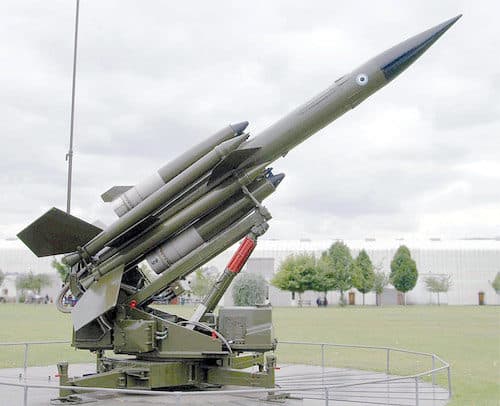
Some of the important sensors include advanced earth observation (EO) and infrared (IR) sensors, target and weapon seekers, laser sensors for detection and imaging of targets, radar sensors for synthetic aperture radar (SAR) and inverse SAR (ISAR), sensors for manned and unmanned aerial platforms, and electro-optical sensors to detect fog, smog and dust. For example, Cartosat-2C, India’s latest EO satellite, can capture various images including trucks and army columns from space. It can be used to monitor the borders and internal regions for security purposes. Images received from this satellite are also used by defence forces to conduct surgical strikes.
Types of sensors
There are many other sensors used in military applications. This article briefly covers some latest sensors used in military applications including active sensors, smart sensors, intelligent sensors, camera sensors, IR sensors, micro-electro-mechanical systems (MEMS), nano-sensors and wearable sensors.
Active sensors. The radar is an example of an active sensor. Active sensors rely on their own sources of radiation to illuminate objects so that the energy reflected and returned to the sensors can be measured. The radar operates in the microwave and radio wavelength regions of the electromagnetic spectrum.
One way to comprehend the active sensor is the ultra-wide band radar module such as the one shown in Fig. 2. It is based on Raspberry Pi 3 that supports various algorithms including distance detection, moving object detection, intrusion detection and vehicle detection.
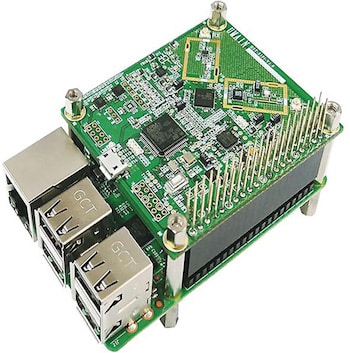
The radar used in military environment uses the same aforementioned principle. High-tech radar systems are associated with digital signal processing, machine learning and are capable of extracting useful information from very high noise levels.
Smart and intelligent sensors. These sensors have rich features including user-friendly, easily accessible, flexible, multifunctional, good processing power, self-testing, self-diagnosis, self-compensation and more. High reliability is one of the key aspects of military specifications. Many manufacturers qualify for such specifications, having reliability to a degree that consumer markets generally do not demand, and the conditions that are unique to military applications.
Visual information plays an important part in intelligent decision making for humans as well as machines. Electronic visual intelligence depends on the image sensors in camera systems. For instance, short-wave IR (SWIR) cameras offer a new weapon in the war on terror and other combat operations.
Camera sensors. Key features of image sensors include face, motion and scene detection. Motion detection technology is used to detect the speed and direction of movement. It limits the effect of blurring of the subject, and scene detection technology determines the optimal settings including brightness, contrast and distance to the subject and colour of the entire image.
Viooa Imaging Technology has been producing smart camera sensors for use in various military applications for unmanned platforms including air, ground and sea. These are designed for use in extreme indoor and outdoor harsh environments to get one or multiple points of interest from different directions.
Canon DIGIC 5 image sensor has amazing features that can achieve a capture rate of 10.3 frames per second at full resolution in high-speed burst HQ, full-HD 1080-pixel videos and intelligent image stabilisation. The company claims that this processor is six times faster than DIGIC 4 and efficiently manages the scene information and reduces noise by up to 75 per cent. This image sensor was co-designed with Texas Instruments (TI) and manufactured by TI through foundry partnership in Asia using 45nm node technology fanned out by TI. DIGIC 8 was introduced in February 2018.
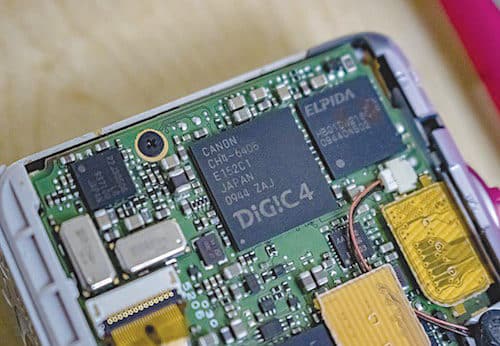
A wide range of military cameras can be found on www.imperx.com/military-cameras/
IR sensors. These are used in image detection and IR jamming of a wide range of military equipment and vehicles including fighter aircraft, unmanned aerial vehicles (UAVs), helicopters, hexacopters, tanks, artillery, navy ships, submarines and missiles. Modern IR sensors can detect minute details at distances of over 100 metres. This technology enables aerial vehicles to fly in the darkest of night, while maintaining near-day visibility.
Many objects such as humans, vehicle engines and aircraft generate and emit heat, and so are visible in the IR wavelengths of light. A passive weapon guidance system or IR homing device uses IR light emission from a target to track and follow it.
Charge-couple device (CCD) and complementary metal oxide semiconductor (CMOS) sensors are used in digital cameras. Both sensors have relatively similar IR spectral response ranges, but CCD is more dominant because it produces superior images using fabrication technology.
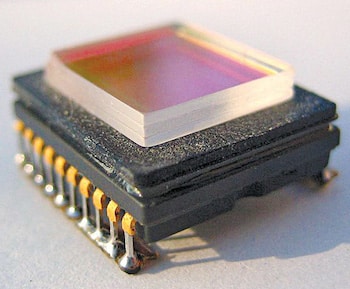
MEMS sensors. These sensors could be deployed in airports, military camps, public buildings and other strategic locations. Miniaturised MEMS sensors have become popular for military applications. Many agencies are working on MEMS sensors for military and defence projects to provide technical solutions for the modern forces. For example, MEMS pressure sensors are used in aircraft, jets, helicopters and various harsh environments; chemical sensors are used to provide accurate and timely information to the soldiers regarding noxious battlefield chemicals; friend-or-foe-identification devices enable soldiers to more easily distinguish their own forces from the enemy’s.
Nano-sensors. Technical advances in sensor technology from MEMS to nanotechnology have attracted considerable interest for military applications. The main areas of interest for military applications are to improve medical and casualty care; to produce strong, adaptive, lightweight materials for use in clothing, both for protection and to provide enhanced connectivity. Examples are nano-robots and micro-radars for miniature vehicles.
Most of these are under research but are promising prospects not only for civilians but for military and defence applications, too. There are many government and private bodies actively doing research in this field. The list of organisations working on nanotechnology can be found on https://en.wikipedia.org/wiki/List_of_nanotechnology_organizations#Manufacturers
Nanotechnology materials like carbon nano-tube is a tube-shaped material, made of carbon, having a diameter measuring on nanometre scale. Different nano-particles of varying size, structure and composition are used to make chemi-resistor sensors. These sensors are used for the detection of hazardous gases in military and other security applications.
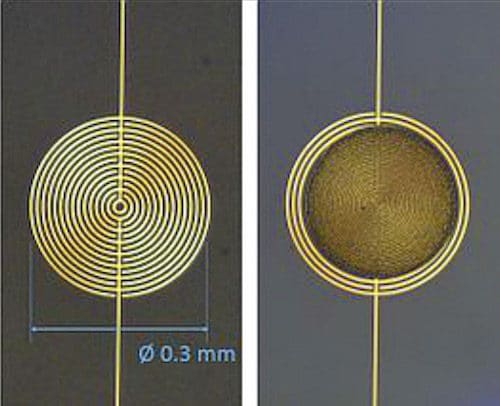
Wearable sensors. Portable and wearables devices are most desirable for soldiers. Hence, there has been a growing trend of wearable technologies for wider military applications. These devices are embedded into clothing and accessories that can comfortably be worn on the body. Wearable technology is not about style or fashion but is more about the smart use of technologies to assist soldiers and military operations. These devices should not be confused with headphones, helmets or specially-made shoes/gloves.
Wearable devices with small and smart sensors provide better connectivity, enable easy and real-time transfer of data, images, audios and videos. Wearable technologies can enhance the sensing capability, artificial intelligence (AI)-based solutions, cognitive abilities and augmented reality (AR). Wearable sensors enable soldiers to be tracked easily, especially in high alert operations, to monitor the safety of each soldier and the troop.
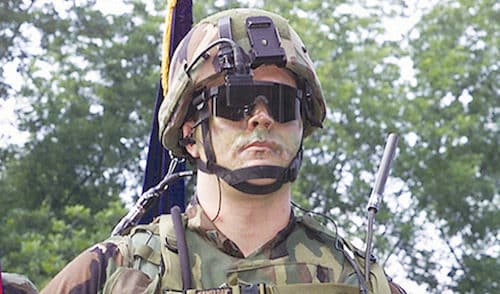
To sum up
The concept of battlefield and military operations has changed significantly over the years due to technological revolutions. The nature of support provided by sensor technologies could be wide ranging from simple sensors to AI-based tools for real-time intelligence sharing and decision support. From soldiers on ground to combat pilots, sensors are making their relevance in various military applications. However, with continuous technological advancements in the fields of wireless sensors, the Internet of Things (IoT), robotics, cognitive sciences, image sensors, wearables and nanotechnology, sensors have a huge potential and can be explored further for military applications.






